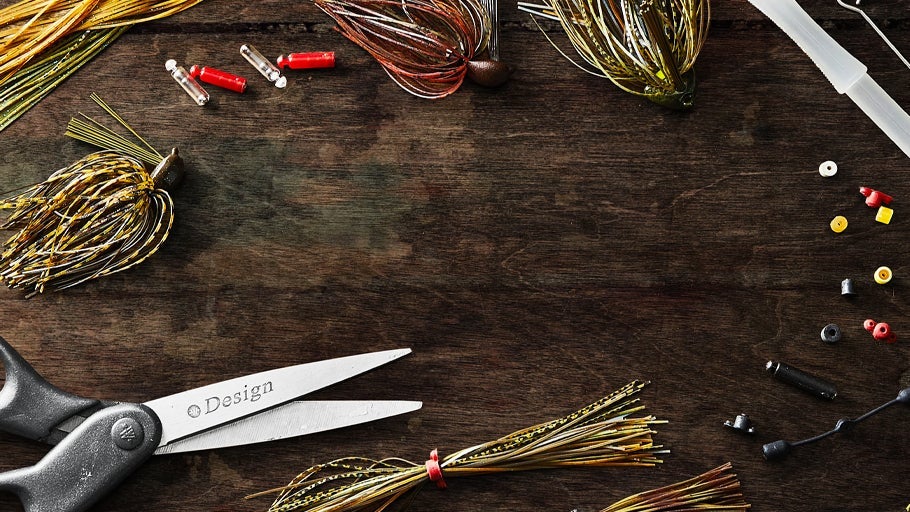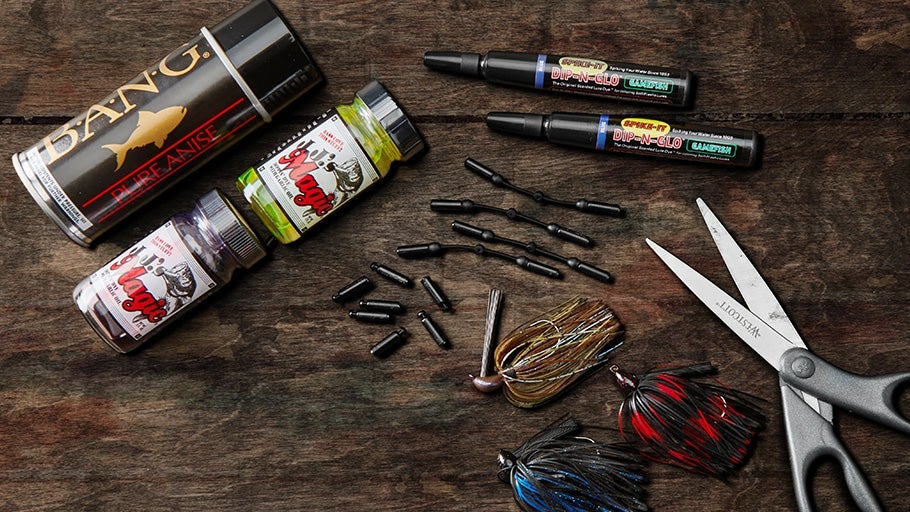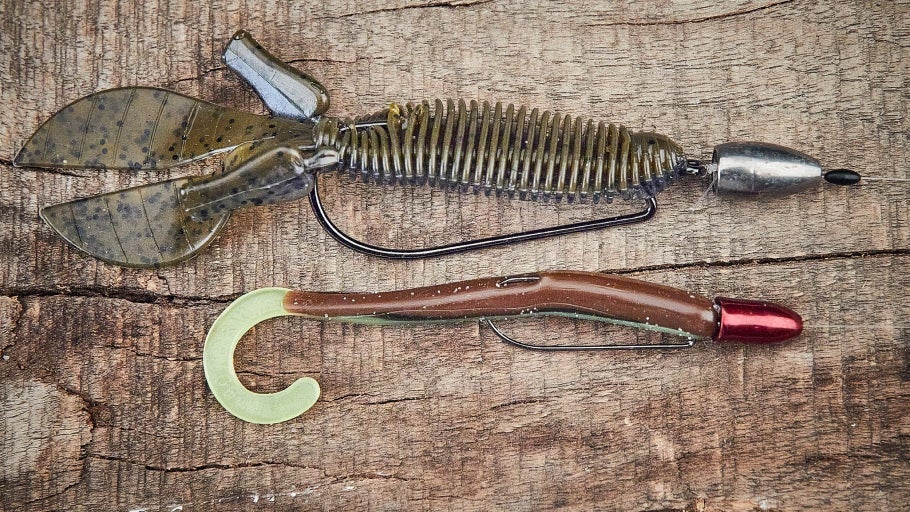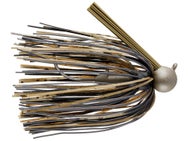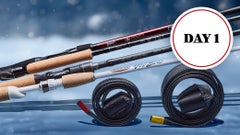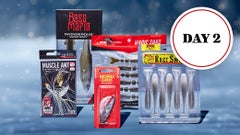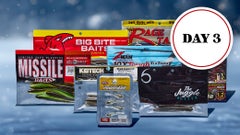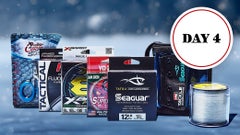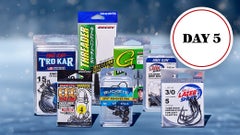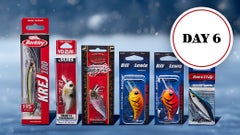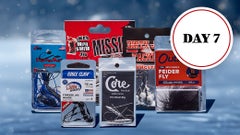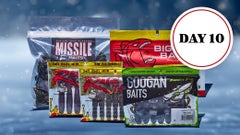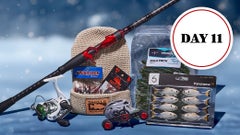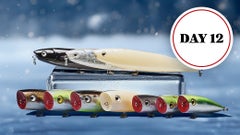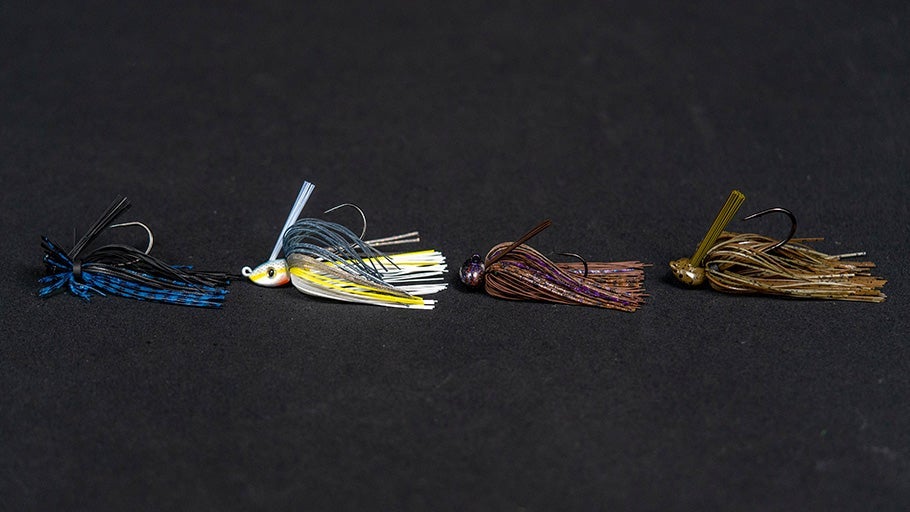
Football Jigs Gear Guide
One of the only lures that will get bit year-round, in most parts of the country, shallow or deep, the football jig delivers an unmatched versatility that appeals to all anglers, from the touring pro to the casual bank walker. A deadly tool anytime bass are keyed in on crawdads and relating to hard bottom, the football jig perfectly imitates the crawling motion and clicking acoustic of a bass’ favorite snack.
Highly effective around any craw-holding habitat, the football jig excels near transitions, so pay close attention to changes in bottom composition when fishing near pea gravel, chunk rock, main lake points, bluff walls, channel swing banks, offshore humps, rock piles, and offshore ledges. To help provide insight into one of the most consistently productive techniques in bass fishing, this guide delivers detailed gear recommendations, modifications, rigging techniques, and offers up some useful tips to generate more of those line-pinging jig bites.
Football Jig Rods
In general, most anglers gravitate toward a rod that is 7’ – 7’6” in length with a medium-heavy to heavy power rating and fast taper. A heavier powered rod provides the angler with the muscle for quality lip penetration with heavy-gauge jig hooks. A faster taper allows the rod to bend quickly near the tip and load into backbone for positive hooksets. Oftentimes the key to effectively fishing a football jig is covering as much water as possible, so consider using a long rod to help increase casting distance. A longer rod also offers more leverage for a better hookset, especially at the end of a long cast.
Football Jig Reels
Ideally, you want a casting reel with a high-speed 7:1 to 8:1 gear ratio when fishing the football jig. The added speed will help gather up line quickly as you reel down for a powerful hookset, keep your line tight after the fish is hooked, and keep the rod loaded as you bring the fish back to the boat. Football jigs are designed for casting in open water and fishing deep water structure, so having plenty of line capacity is important when you are using heavier line to ensure you aren’t fishing with your whole spool in the water. Try using a 100- to 200-size reel to give you enough line capacity for long casts, and consider using an external brake adjustment so you don’t have to remove the side plate to make adjustments to the spool during fishing.
Football Jig Line
Fluorocarbon has a natural tendency to sink, allowing the jig to produce the best action underwater and stay in the strike zone throughout your cast, and its low stretch provides excellent bite detection and feel as it contacts structure. Unlike moving baits which only provide the fish with a split-second opportunity to feed, football jigs move slowly and allow bass to weigh their options, making fluorocarbon’s near-invisibility an absolute necessity.
Most anglers would agree that 12- to 20-lb line is a suitable range for football jigs, with 15 lb being a great starting point for most situations. Football jigs are often fished around rocky terrain and sharp structures, so many anglers will use the heaviest line they can get away with for the added abrasion resistance. On the flip side, smaller diameter fishing lines allow the jig to reach bottom quickly, which can be advantageous for fishing deeper water.
Modifications & Rigging
Whether you prefer the old-school chunk, bulky beavers, thumping twin tails, or detailed crawfish imitators, the styles of football jig trailers are endless. As a good rule of thumb, your warm-water jig trailers should have more action like a twin-tail grub or craw with large flapping appendages, and your cold-water jig trailers are most effective when they have the subtle action of a chunk or beaver-style bait.
Keep a pair of scissors handy so you can cut down the thickness of a weedguard or trim the skirt down to match the trailer. Removing fibers from the base of the weedguard will reduce the thickness and improve your hook-up ratios around sparse cover. The proper skirt length is a matter of angler preference, but typically you don’t want the skirt to impede the action of any trailer appendages, and if the water is really clear you may want to remove it completely. Also, it’s never a bad idea to store some rattle bands in your jig box for those times when you get to the lake and find dirty or stained water.
Tips & Tricks
As water temperatures start to creep up, try imparting more action with sharp snaps of the rod tip. A small bit of action can often mean the difference between a big bag and going home empty-handed. Conversely, when water temperatures drop, slowing down can be the key to tempting lethargic fish into biting. When you find yourself bumping into cover, don’t be in a rush to free your jig, as you are in a high-percentage area. Slow down and give your jig a couple of shakes, banging it against structure to produce a bite. When you feel the bite, reel down to the fish, use a long powerful sweeping hookset, and continue to drive the hook to keep them pinned as you reel them back to the boat.
Aside from changing your jig trailer, there are a couple of quick adjustments that anglers can make to squeeze a few more bites out of a long day of fishing. Switching to a slightly heavier football jig will increase the rate of fall and generate reaction bites from more aggressive fish. Try dyeing the appendages of your trailer with some red or chartreuse, especially when the fish are keyed in on bluegill or red craws. Scent can also make a big difference, especially in the stingy winter months or under tough fishing conditions, so don’t hesitate to give your football jig some added juice with an attractant.
Colors
Football jigs are most commonly used to mimic crawfish cruising along the bottom, so browns, blacks, and green pumpkin colors are always a good place to start. When the lake is more active during the spring and summer months, they can also be used to imitate a wide assortment of forage, so don’t hesitate to mix it up with some bluegill, crappie, and sunfish patterns. High-contrast colors like black/blue are a great option when the water clarity is poor, but natural colors excel when the water is clear. When the bass are keyed in on bite-sized forage like shad or minnows, a finesse football jig can be an excellent choice for tempting light-feeding fish.
The optimal tool for probing deep water structure, football jigs go hand-in-hand with exploring ledges, deep points, or offshore humps with a football-shaped head design that is built to traverse hard bottoms with minimal snagging. Known for delivering that kicker bite on tournament day, the football jig is perfect for mimicking a crawfish or bottom-feeding bluegill and is one of the core fundamental techniques of bass fishing.
Related Content

